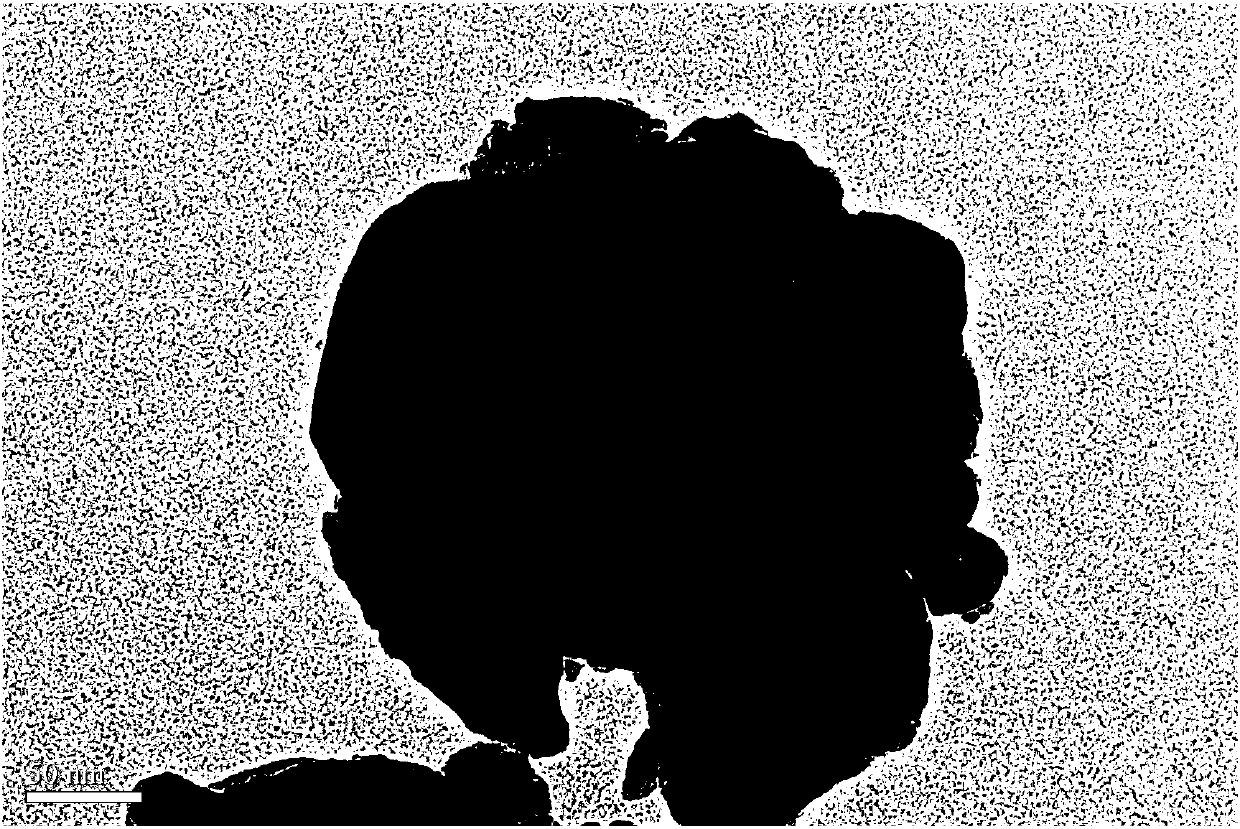Preparation and application of powder catalytic material, nanoribbon catalytic material and composite porous catalytic material
A technology of powder catalytic materials and catalytic materials, applied in catalyst activation/preparation, heterogeneous catalyst chemical elements, special compound water treatment, etc., can solve the problems of low photocatalytic efficiency and low degradation efficiency of organic pollutants
- Summary
- Abstract
- Description
- Claims
- Application Information
AI Technical Summary
Problems solved by technology
Method used
Image
Examples
preparation example Construction
[0083] The present invention also provides GdSnWSbO 9 -The preparation method of sodium-based montmorillonite composite porous catalytic material, the specific steps are as follows:
[0084] Pretreatment of Na-montmorillonite: 4.8g of L-cystine and 2.4mL of concentrated sulfuric acid were added to 800mL of 80°C distilled water, and then added to the aqueous dispersion containing 20g of Na-montmorillonite, The mixed dispersion was stirred in a water bath at 80°C for 5 hours and then cooled to room temperature, and the obtained product was filtered, washed and dried for later use;
[0085]wxya 9 -Preparation of Na-montmorillonite composites: GdSnWSbO 9 Dissolve the powder in deionized water to obtain a 2 mg / mL solution, and oscillate with ultrasound until a homogeneous solution is formed, and set aside; the sodium-based montmorillonite is 9 : Na-montmorillonite mass ratio of 1:10 was added to the homogeneous solution, stirred in a water bath at 80°C for 5 hours, so that GdSnW...
Embodiment 1
[0107] Using GdSnWSbO 9 Photocatalytic degradation of methyl orange (C 14 h 14 N 3 SO 3 Na).
[0108] GdSnWSbO 9 Put 1.2g of powder into 500mL methyl orange aqueous solution to form a suspension system, the initial concentration of methyl orange aqueous solution is 0.04mmol L -1 , with an initial pH of 7. Select a 500W xenon lamp to irradiate the methyl orange solution with a cut-off filter (λ>420nm). The intensity of incident light is 4.76×10 -6 Einstein L -1 ·s -1 . During the experiment, the catalyst powder was maintained in a suspended state by means of a magnetic stirrer and oxygen aeration. The entire light reaction was carried out in a closed and light-tight environment. GdSnWSbO 9 The powder is a catalyst. Under visible light irradiation, as the irradiation time prolongs, the concentration of methyl orange gradually decreases, and the concentration of total organic carbon (TOC) also gradually decreases. After 315 minutes, the removal rate of methyl orange ...
Embodiment 2
[0114] Using GdSnWSbO 9 Powder degradation of p-chloroaniline (C 6 h 6 ClN)
[0115] GdSnWSbO 9 Put 1.2g of powder into 500mL p-chloroaniline aqueous solution to form a suspension system, the initial concentration of p-chloroaniline aqueous solution is 0.04mmol L -1 , with an initial pH of 7. Select a 500W xenon lamp to irradiate the p-chloroaniline solution with a cut-off filter (λ>420nm). The intensity of incident light is 4.76×10 -6 Einstein L -1 ·s -1 . During the experiment, the catalyst powder was maintained in a suspended state by means of a magnetic stirrer and oxygen aeration. The entire light reaction was carried out in a closed and light-tight environment. GdSnWSbO 9 The powder is a catalyst, and under visible light irradiation, as the irradiation time prolongs, the concentration of p-chloroaniline decreases gradually, and the concentration of total organic carbon (TOC) also gradually decreases. After 325 minutes, the removal rate of p-chloroaniline is 10...
PUM
| Property | Measurement | Unit |
|---|---|---|
| particle diameter | aaaaa | aaaaa |
| particle diameter | aaaaa | aaaaa |
| particle diameter | aaaaa | aaaaa |
Abstract
Description
Claims
Application Information
 Login to View More
Login to View More - R&D
- Intellectual Property
- Life Sciences
- Materials
- Tech Scout
- Unparalleled Data Quality
- Higher Quality Content
- 60% Fewer Hallucinations
Browse by: Latest US Patents, China's latest patents, Technical Efficacy Thesaurus, Application Domain, Technology Topic, Popular Technical Reports.
© 2025 PatSnap. All rights reserved.Legal|Privacy policy|Modern Slavery Act Transparency Statement|Sitemap|About US| Contact US: help@patsnap.com


